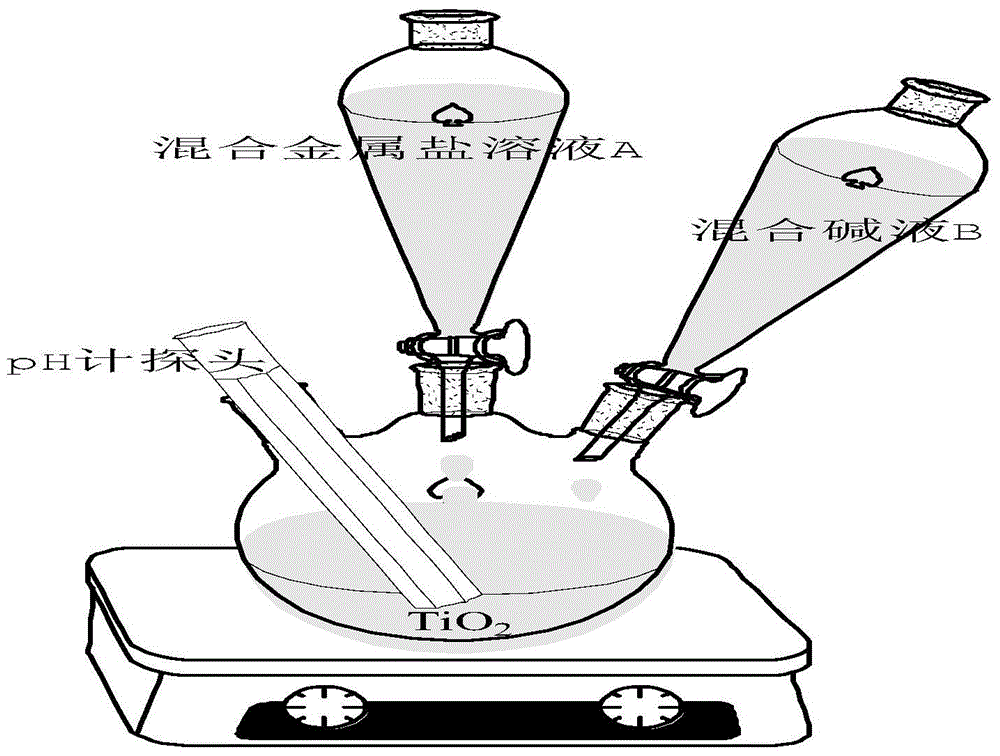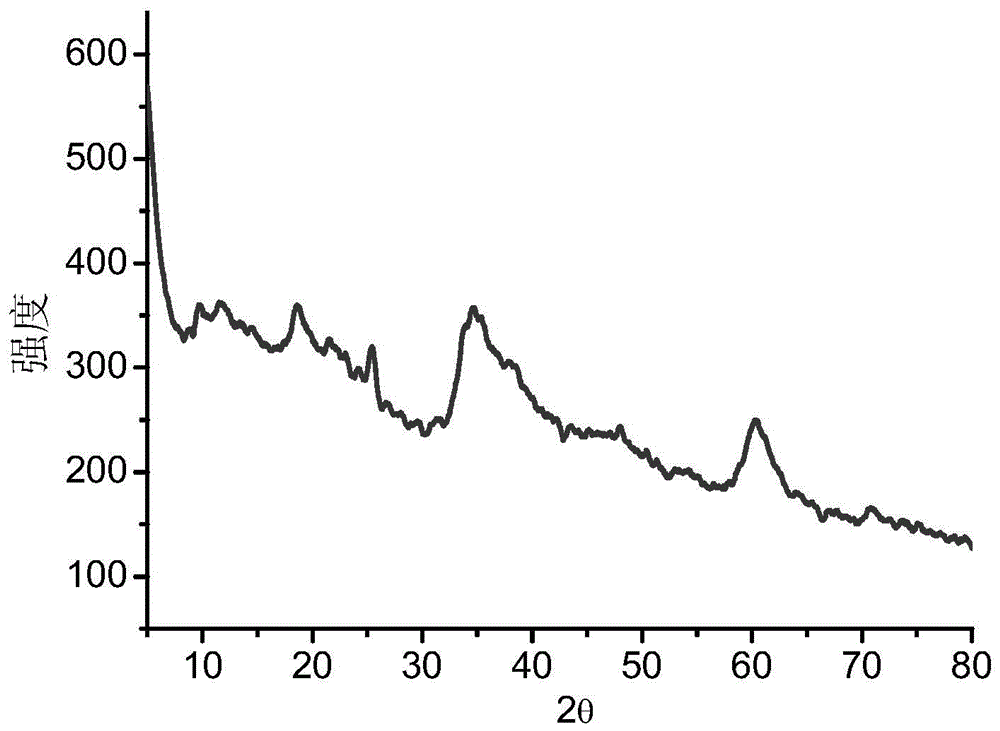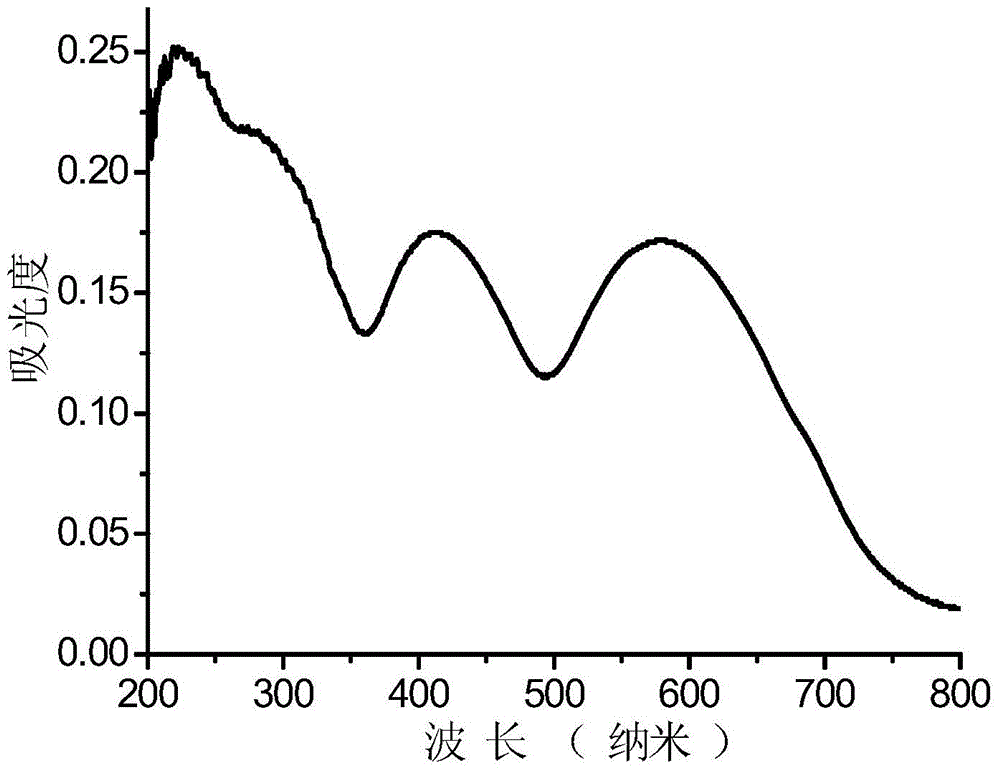MgZnCr-TiO2 hydrotalcite visible-light-induced photocatalyst as well as preparation method and application thereof
A hydrotalcite, visible light technology, used in physical/chemical process catalysts, metal/metal oxide/metal hydroxide catalysts, chemical instruments and methods, etc., can solve the harsh synthesis conditions of hydrotalcite, cannot completely remove pollutants, problems such as low utilization of visible light, to achieve the effect of facilitating large-scale production, the preparation process is green and environmentally friendly, and no special equipment is required
- Summary
- Abstract
- Description
- Claims
- Application Information
AI Technical Summary
Problems solved by technology
Method used
Image
Examples
Embodiment 1
[0050] A kind of MgZnCr-TiO of the present invention 2 Hydrotalcite-like visible light catalyst, the MgZnCr-TiO 2 The hydrotalcite-like visible light catalyst includes carbonate-type magnesium-zinc-chromium-like hydrotalcite and titanium dioxide, and the titanium dioxide is supported on the carbonate-type magnesium-zinc-chromium-like hydrotalcite. The MgZnCr-TiO 2 The hydrotalcite-like visible photocatalyst has a lamellar structure. The MgZnCr-TiO 2 The hydrotalcite-like visible light catalyst is mainly composed of MgCl 2 , ZnCl 2 , CrCl 3 Mixed metal salt solution A, NaOH, Na 2 CO 3 The mixed alkali solution B and nano-TiO 2 Aqueous suspensions are prepared by co-precipitation.
[0051] A kind of MgZnCr-TiO of the above-mentioned embodiment of the present invention 2 A method for preparing a hydrotalcite-like visible light catalyst, and a preparation device such as figure 1 shown, including the following steps:
[0052] (1) Take 1.0165gMgCl 2 ·6H 2 O, 0.6815g Zn...
Embodiment 2
[0064] A kind of MgZnCr-TiO of the present invention 2 The application of hydrotalcite-like visible light catalyst in photocatalytic degradation of dye wastewater comprises the following steps:
[0065] (1) get the MgZnCr-TiO in 0.05g embodiment 1 2 The hydrotalcite-like visible light catalyst was added to 100mL of Congo red solution with an initial concentration of 100mg / L, placed in the dark and stirred at a stirring speed of 800rpm for 0.5h to make MgZnCr-TiO 2 The hydrotalcite-like visible photocatalyst reaches adsorption equilibrium, and a mixed solution is obtained.
[0066] (2) Under normal temperature and pressure, place the mixed solution in step (1) under the irradiation of a xenon lamp light source (with 300W, a xenon lamp with a filter to simulate a visible light source) and carry out photocatalytic degradation for 180min to complete the Congo red solution. degradation.
[0067] The principle of Congo red degradation is as follows: under dark conditions, Congo r...
Embodiment 3
[0078] A kind of MgZnCr-TiO of the present invention 2 The preparation method of the hydrotalcite-like visible light catalyst is basically the same as that of Example 1, except that the molar ratio of Mg:Zn:Cr=1:2:1 in the mixed metal salt solution A of this example. The MgZnCr-TiO prepared in this example 2 The hydrotalcite-like visible light catalyst is used to treat the Congo red solution, and the application method is the same as in Example 2. Figure 10 It is the relationship diagram of the removal effect of Congo red solution with time. From Figure 10 As can be seen in the figure, when the photocatalytic degradation is 30min, the removal rate of Congo red is 44.4%, and when the degradation is 90min, the removal rate of Congo red has reached 59.8%, which shows that the MgZnCr-TiO of the present invention 2 The hydrotalcite-like visible light catalyst can effectively degrade Congo red.
PUM
| Property | Measurement | Unit |
|---|---|---|
| Specific surface area | aaaaa | aaaaa |
Abstract
Description
Claims
Application Information
 Login to View More
Login to View More - R&D
- Intellectual Property
- Life Sciences
- Materials
- Tech Scout
- Unparalleled Data Quality
- Higher Quality Content
- 60% Fewer Hallucinations
Browse by: Latest US Patents, China's latest patents, Technical Efficacy Thesaurus, Application Domain, Technology Topic, Popular Technical Reports.
© 2025 PatSnap. All rights reserved.Legal|Privacy policy|Modern Slavery Act Transparency Statement|Sitemap|About US| Contact US: help@patsnap.com



